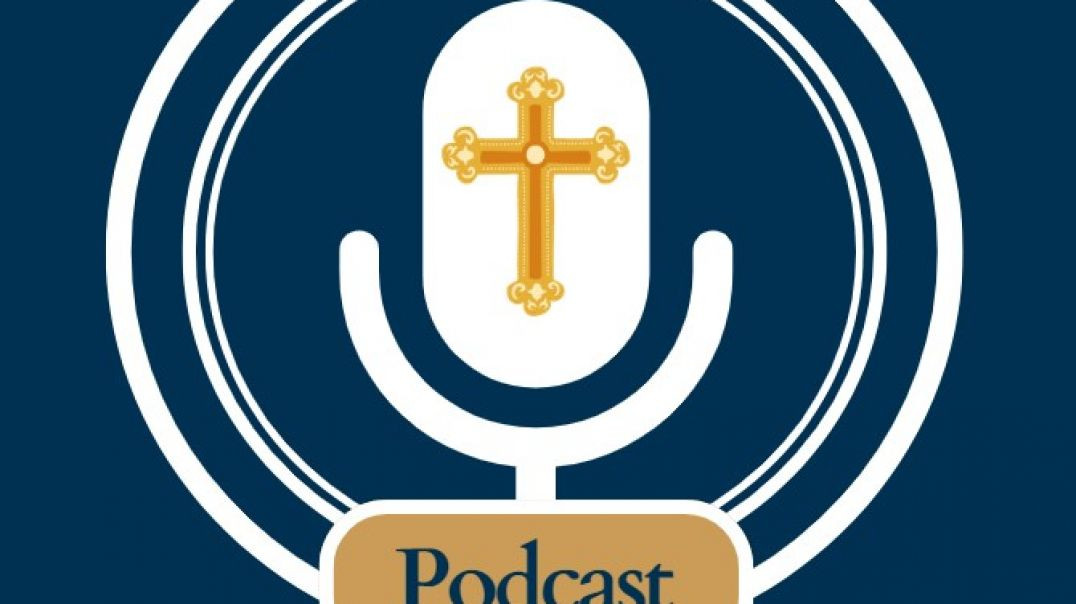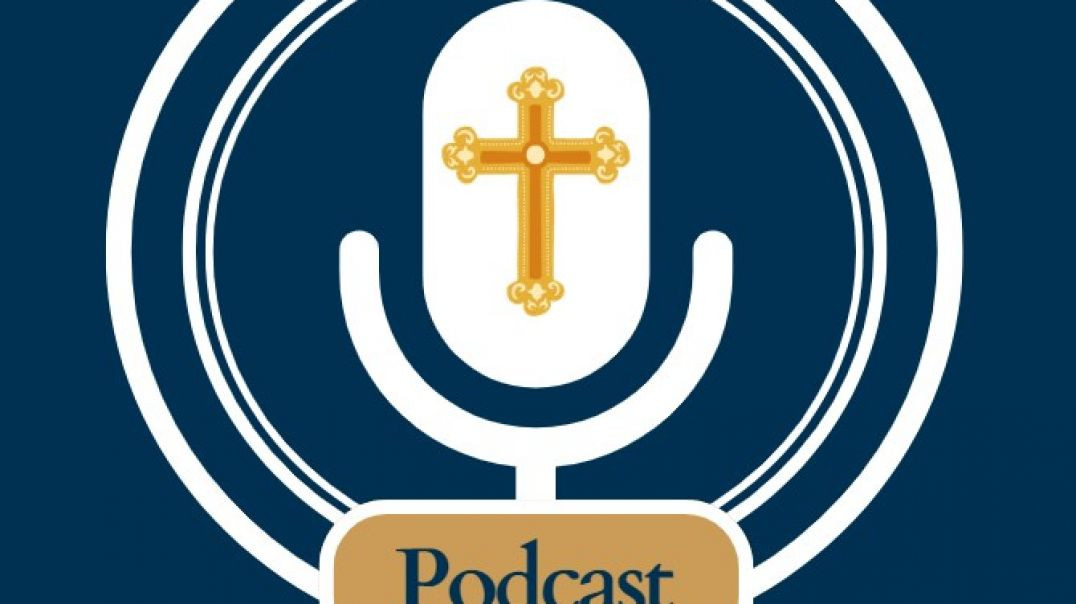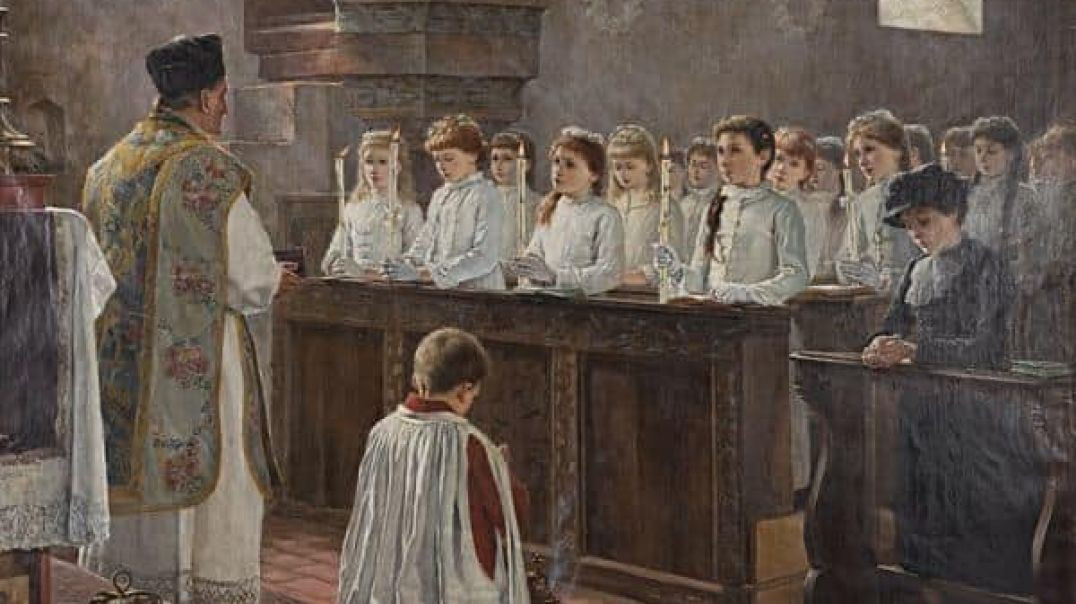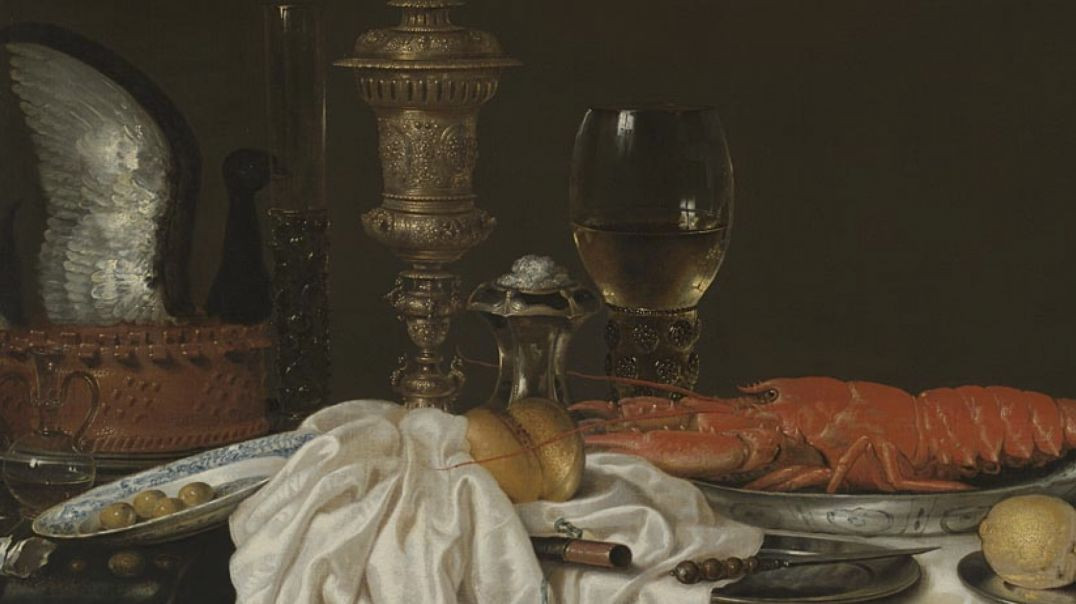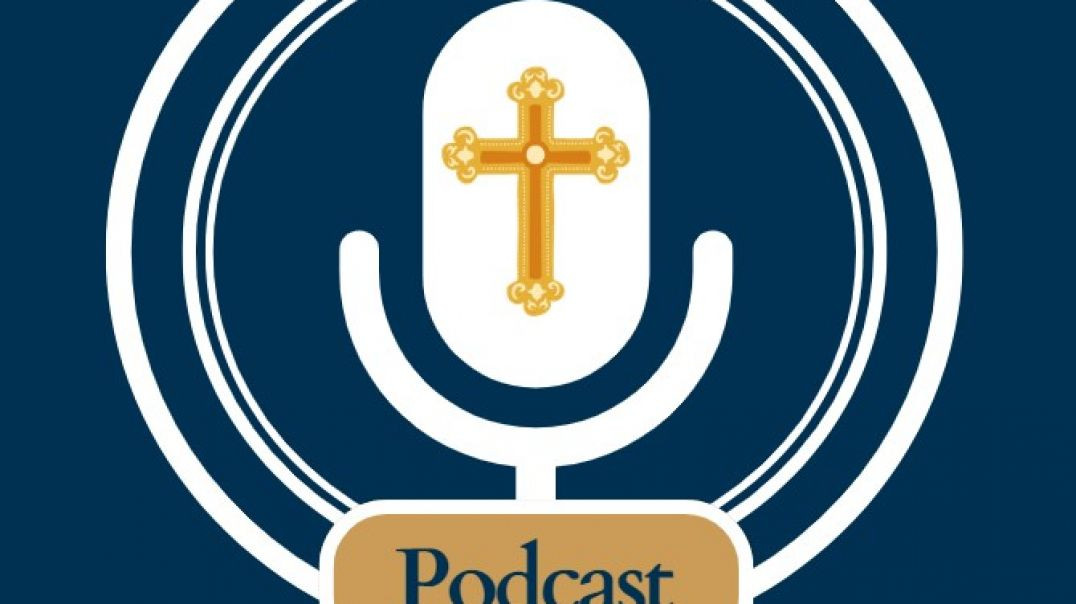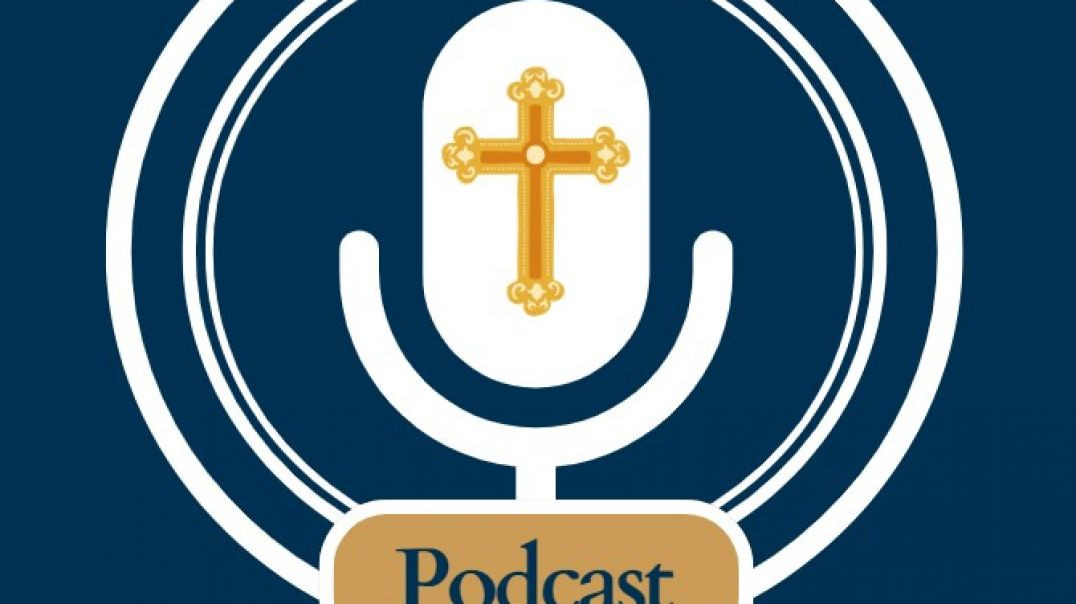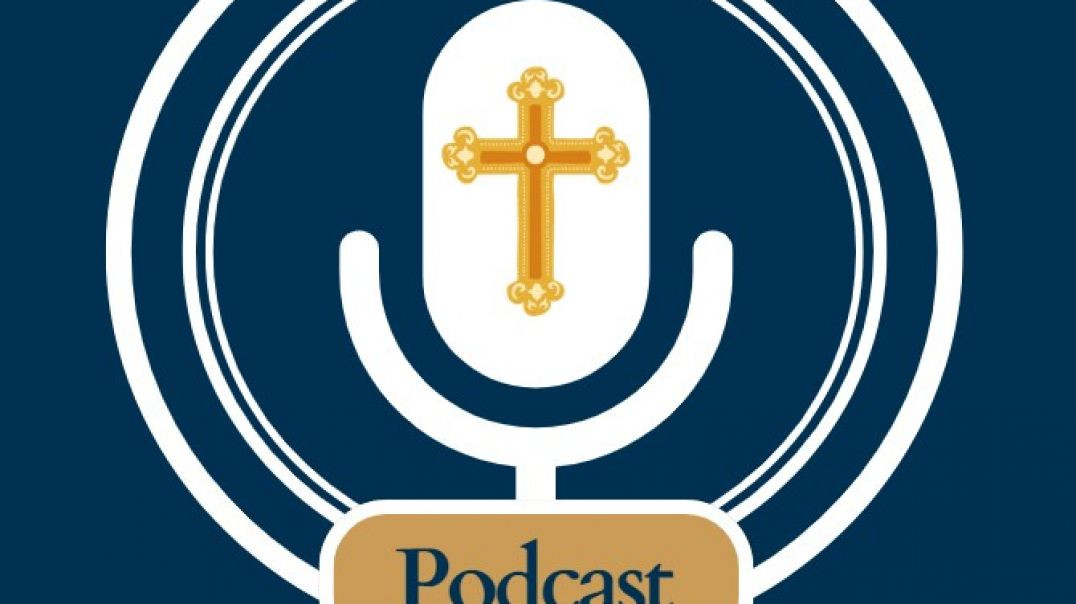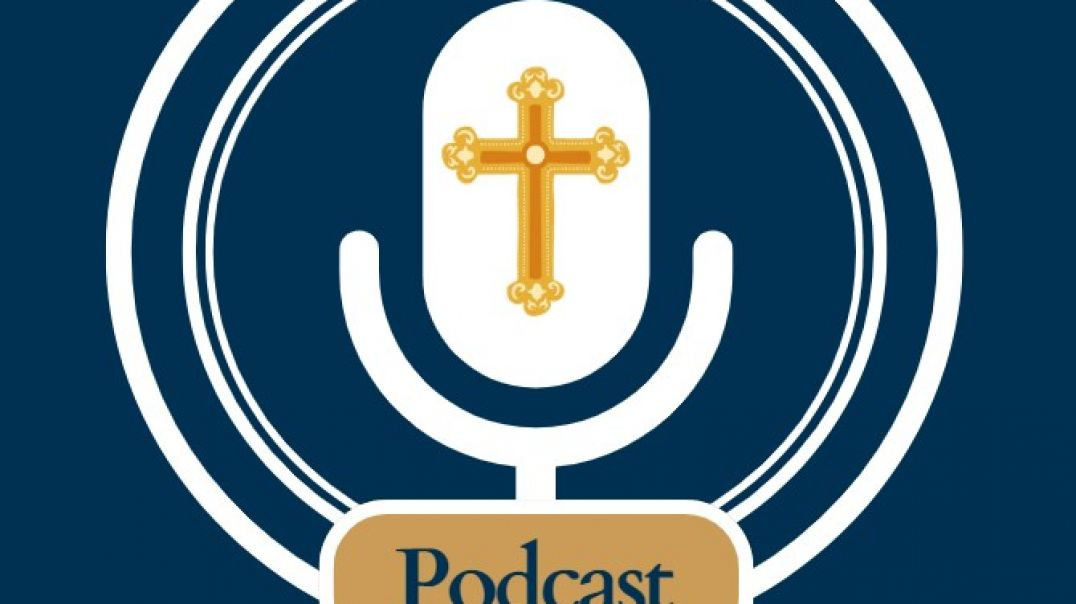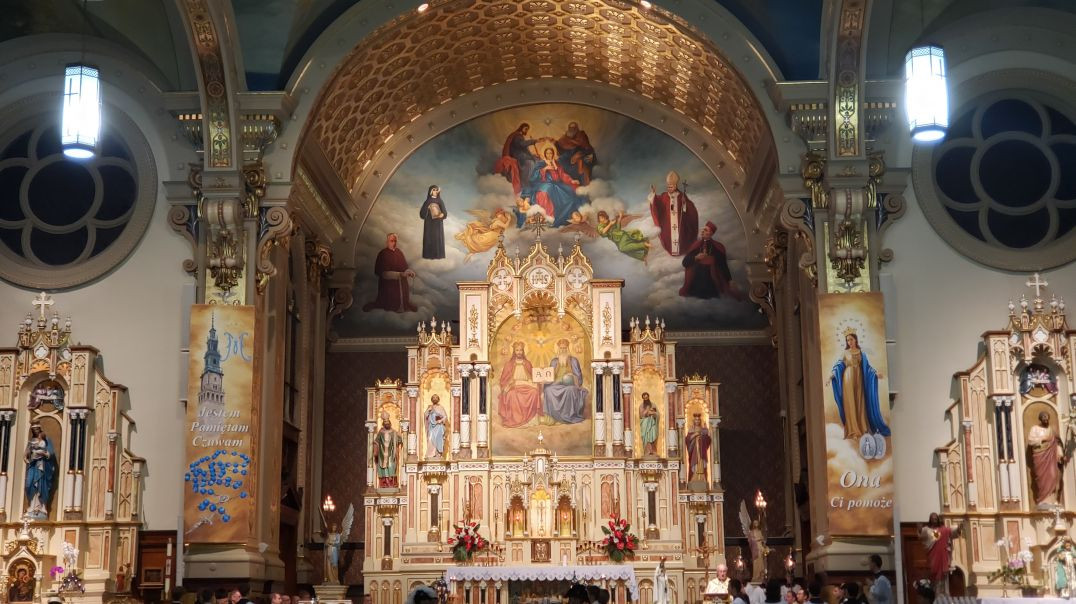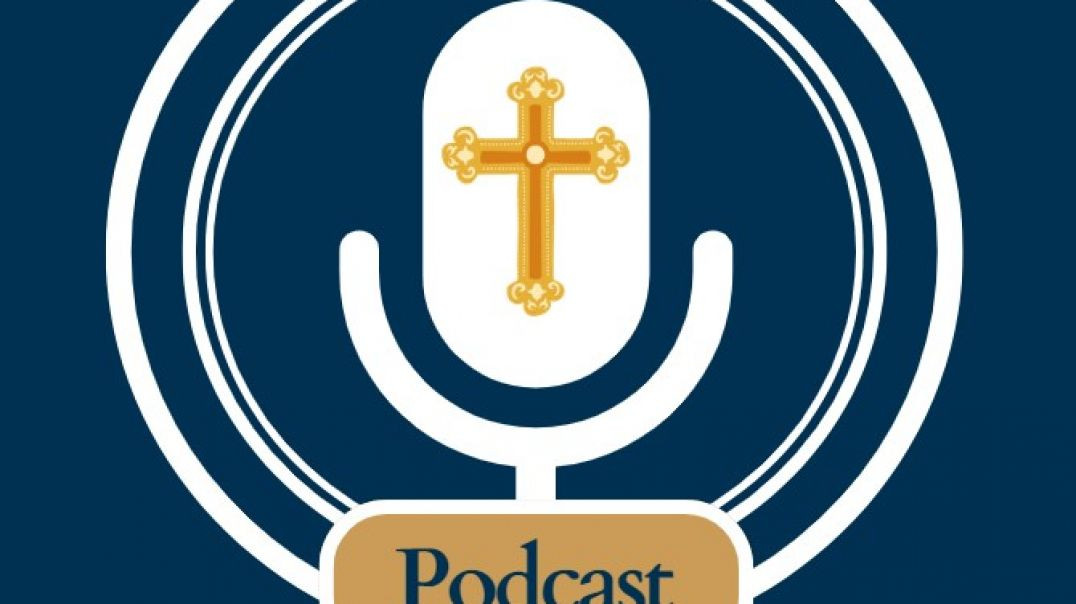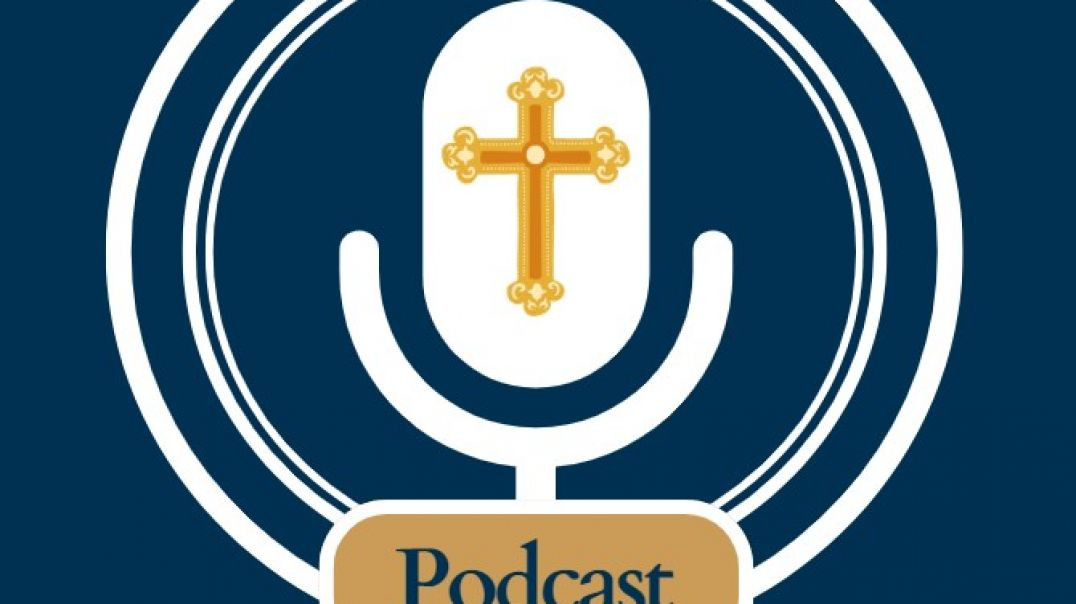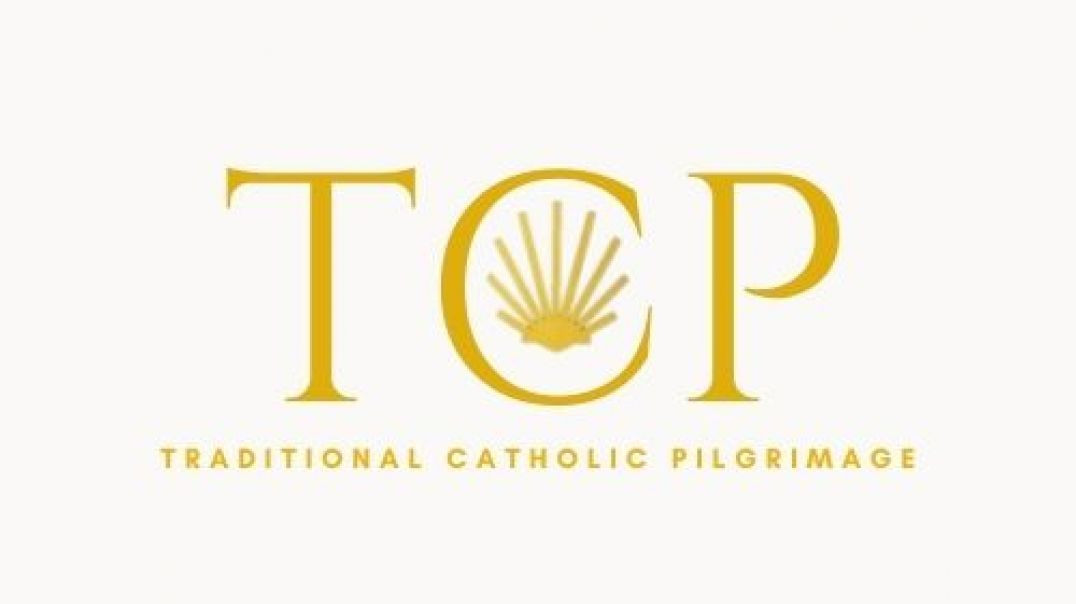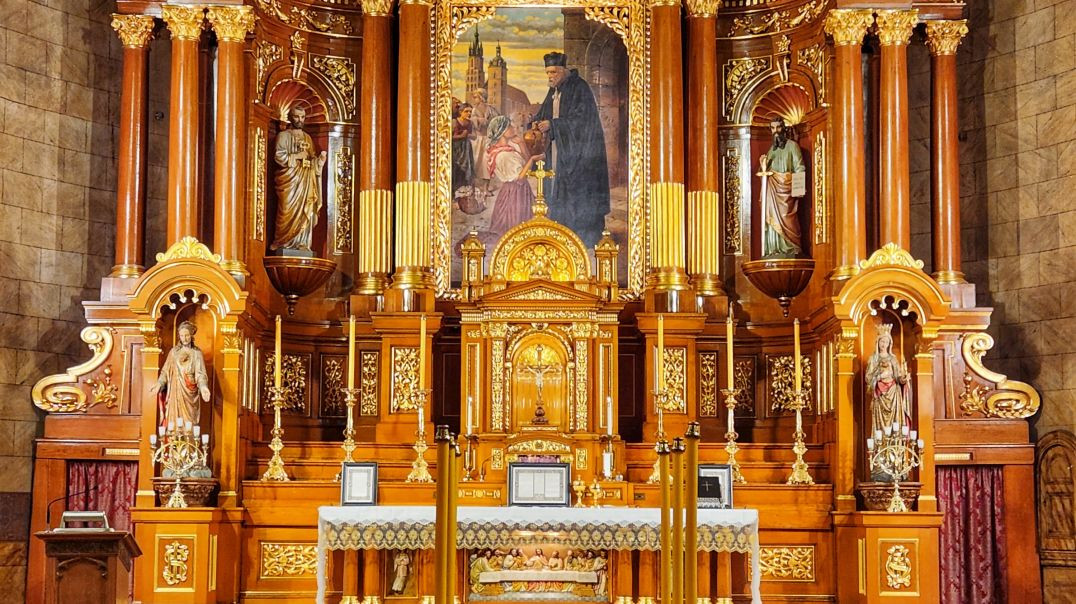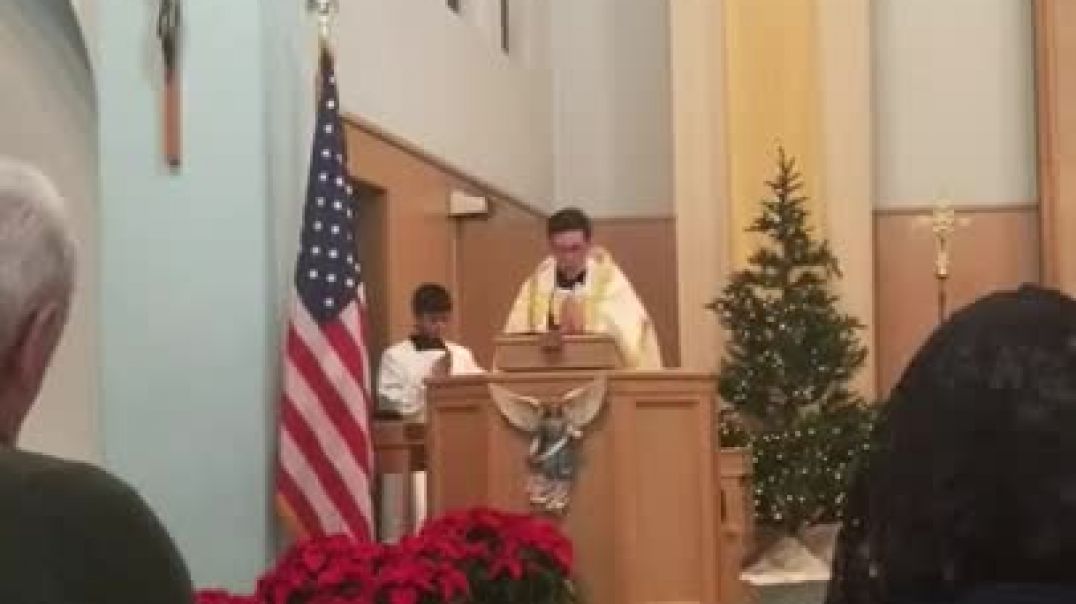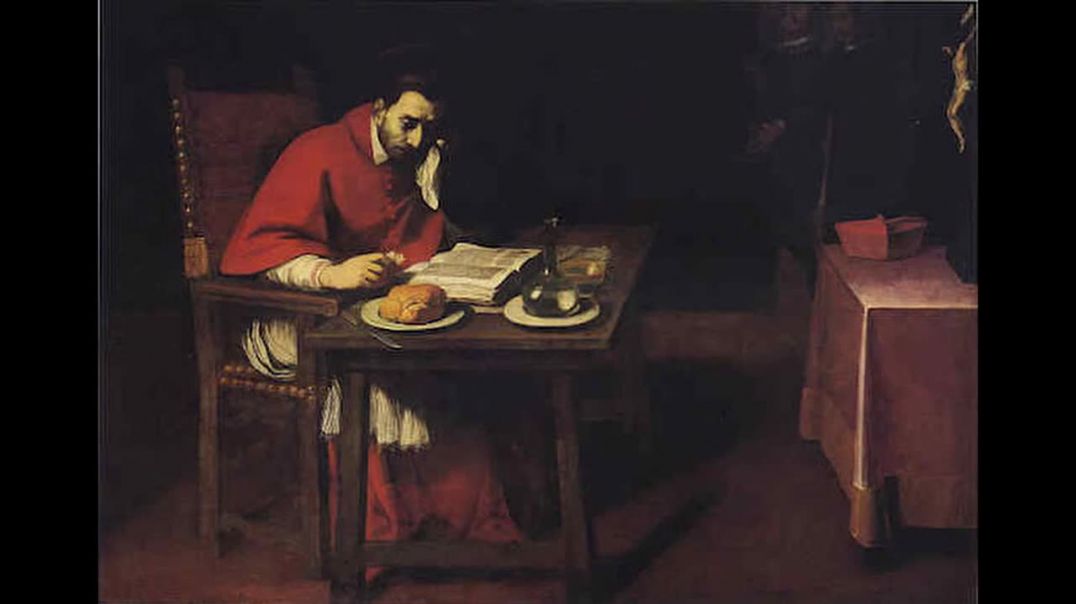
A Catholic Life
|Subscribers
Latest videos
In today’s episode, on the 6th Sunday after Pentecost, I address the following:
Offering Up Fasting while in the state of grace for Priests
Upcoming Feastdays this Week
I would like to thank CatechismClass.com for sponsoring this episode. CatechismClass.com, the leader in online Catholic catechism classes, has everything from online K-12 programs, RCIA classes, adult continuing education, marriage preparation, baptism preparation, confirmation prep, quince prep classes, catechist training courses, and much more. They are currently offering a special July sale on their collection of Catholic book summaries – study the richness of traditional and contemporary Catholic classics in a fraction of the time with 5-page summaries of each book.
Subscribe to the podcast on Buzzsprout, Apple Podcasts, Spotify, I-tunes, and many other platforms!
https://acatholiclife.blogspot.....com/2023/07/a-catho
In today’s episode, on the 3rd Sunday after Pentecost, I address the following:
The Vigil of St. John the Baptist Customs
The Nativity of St. John the Baptist, who was born without original sin
Other Feastdays Coming This Week, including St. Aloysius, Patron of Catholic Youth
This episode is sponsored by PrayLatin.com. PrayLatin.com offers Latin prayer cards to learn and share prayers in the sacred language. Learn your basic prayers without spending more time looking at screens. Conveniently carry these Latin prayers with you on the go. Share basic prayers in Latin with your family and friends. PrayLatin.com prayer cards are available in various formats. Practice your pronunciation with easy-to-follow English phonetic renderings of Latin words. PrayLatin.com also offers Latin-English rosary pamphlets with the traditional 15 mysteries. Visit PrayLatin.com today and take advantage of generous free shipping offers on both domestic and international orders.
Subscribe to the podcast on Buzzsprout, Apple Podcasts, Spotify, I-tunes, and many other platforms!
https://acatholiclife.buzzsprout.com/
For many articles on fasting and abstinence, please see https://acatholiclife.blogspot.....com/2022/11/the-def
Fasting before receiving our Lord in Holy Communion, although the specifics have changed over time, is of apostolic origin. Hippolytus (c. 170 – 235 AD) in the Apostolic Tradition writes, "The faithful shall be careful to partake of the eucharist before eating anything else." At the Synod of Hippo in 393, the Eucharistic Fast was codified in Canon 29, and again a few years later it was likewise codified at the Synod of Carthage in Canon 28.
St. Augustine bears witness to the universality of the fast before Holy Communion in his writings: “Must we therefore censure the universal Church because the sacrament is everywhere partaken of by persons fasting? Nay, verily, for from that time it pleased the Holy Spirit to appoint, for the honour of so great a sacrament, that the body of the Lord should take the precedence of all other food entering the mouth of a Christian; and it is for this reason that the custom referred to is universally observed.”
The Eucharistic Fast immediately prior to Paul VI’s changes in 1964 followed the mitigated discipline introduced by Pope Pius XII on January 6, 1953, in Christus Dominus and on March 25, 1957, in Sacram Communionem. While legislating on a number of finer details, as a whole, Pope Pius XII’s legislation mitigated the fast to be for three hours before Holy Communion from all solid food and all alcoholic beverages. Nonalcoholic beverages were subject to a one hour fast, though water was permitted as stated in Christus Dominus: “In the future it shall be a general and common principle for all, both priests and faithful, that natural water does not break the Eucharistic fast.”
Note, that Pope Pius XII encouraged those who could keep the older fast to continue to do so: “We strongly exhort priests and faithful who are able to do so to observe the old and venerable form of the Eucharistic fast before Mass and Holy Communion. All those who will make use of these concessions must compensate for the good received by becoming shining examples of a Christian life and principally with works of penance and charity.”
What was the Fast Prior to Pope Pius XII? The traditional Eucharistic fast involved total abstinence from all food and all drinks, including water, from midnight until the reception of Holy Communion. Such a fast applied to priests as well as anyone approaching Holy Communion. This was enriched into Canon 858 of the 1917 Code: “Those who have not kept the natural fast from midnight are not allowed to receive, except in danger of death, or in case it should become necessary to consume the Blessed Sacrament to safeguard it against irreverence.”
The intentional violation of the Eucharistic fast is a mortal sin: "Communion is forbidden under grave sin to one who has broken his fast by taking even a small amount of food or forbidden drink" (Fr. Heribert Jone's Moral Theology, page 358).
The Eucharistic Fast is set by the Church so that those who are to receive our Lord in Holy Communion are more consciously aware of this sublime encounter. We need to fast beforehand to adequately prepare ourselves. To intentionally violate the Eucharistic fast is a mortal sin. Let us endeavor to observe in our own lives the strictness of the traditional discipline, in a time when so few do penance.
Learn more in the book "The Definitive Guide to Catholic Fasting and Abstinence" by Matthew Plese reviewed at https://acatholiclife.blogspot.....com/2023/02/the-def
Fasting is one of the chief means of penance we can perform to make satisfaction for sin, as our Lady of Fatima repeatedly called for. However, in a modern Church that legislates fasting only two days a year, we find a woefully lacking answer to Heaven’s incessant calls for penance and reparation. Understanding the decline of fasting over time in the Church should inspire us to observe these older customs and to encourage other Catholics to do so for the purpose of making satisfaction for sin.
While the purpose of fasting has remained the same, how fasting is observed has changed. As more Catholics seek to rediscover the traditions of earlier centuries and piously observe these traditions, they are often confused by the changing disciplines and exceptions for certain times, places, and circumstances. St. Francis de Sales remarked, “If you’re able to fast, you will do well to observe some days beyond what are ordered by the Church.”
This talk, based on the research in "The Definitive Guide to Catholic Fasting and Abstinence" by Matthew Plese explains fasting and how it has changed over the centuries in one of the most complete compilations yet written. Unfortunately, most summaries of fasting are either inaccurate or incomplete. However, rather than being a mere academic exercise, the purpose of studying the history of fasting is ultimately to help us rediscover these more ancient practices in an attempt to better observe our Lord and our Blessed Mother’s call for penance and reparation for sins.
As Archbishop Fulton J. Sheen once remarked, "It is a long-established principle of the Church never to completely drop from her public worship any ceremony, object or prayer which once occupied a place in that worship." The same may be said for matters concerning either Holy Days of Obligation or fast days. What our forefathers held sacred should remain sacred to us in an effort to preserve our catholicity not only with ourselves but with our ancestors who see God now in Heaven.
The book is available in English, Spanish (La Guía Completa del Ayuno y Abstinencia en el Catolicismo), and Polish (Wszechstronny przewodnik katolickiego postu i wstrzemięzliwośći)!
For more information, see https://acatholiclife.blogspot.....com/2022/11/the-def for a variety of articles on the forgotten history of Catholic fasting and abstinence
In today’s episode, on this Palm Sunday, I address the following:
The Strictness of the Holy Week Fast: Passion Fast & Xerophagiae
Traditions for Holy Week: Indulgences, Forgotten Customs, & Suggestions for a Holy Week
Subscribe to the podcast on Buzzsprout, Apple Podcasts, Spotify, I-tunes, and many other platforms at https://acatholiclife.buzzsprout.com/
In today’s episode, on this Fifth Sunday of Lent (Passion Sunday), I address the following:
1. Passion Sunday: Veiling of Images & the Custom of Changing the Rosary
2. The Worship Owed to the Cross: Is it Latria or Dulia?
3. Feasts of St. John Damascene and St. John of Capistrano
I would like to thank www.CatechismClass.com for sponsoring this episode. CatechismClass.com, the leader in online Catholic catechism classes, has everything from online K-12 programs, RCIA classes, adult continuing education, marriage preparation, baptism preparation, confirmation prep, quince prep classes, catechist training courses, and much more.
Subscribe to the podcast on Buzzsprout, Apple Podcasts, Spotify, I-tunes, and many other platforms at https://acatholiclife.buzzsprout.com/
In today’s episode, on this Fourth Sunday of Lent (Laetare Sunday), I address the following:
Laetare Sunday and the custom of the Papal Golden Rose
The Transferred Feast of St. Joseph vs. the forgotten former Eastertide Feast of St. Joseph
The Votive Feast of the Precious Blood (Friday after the Fourth Sunday in Lent)
The History of American Anti-Catholicism of the Late 1800s and early 1900s
To start, though, I’d like to remind everyone that Meaning of Catholic has launched its online shop, and PDFs of my book on the Roman Catechism and my book on fasting and abstinence are available at https://meaningofcatholic.com/shop/. For the fasting one, English, Spanish, and Polish are all available there. So please check them out if you would like a PDF of any of these books. PDFs are only $9.99 each.
For links for the paperback and Kindle versions on Amazon, click here.
Subscribe to the podcast on Buzzsprout, Apple Podcasts, Spotify, I-tunes, and many other platforms at https://acatholiclife.buzzsprout.com.
In today’s episode, on this Third Sunday of Lent, I address the following:
1. There is No Salvation in Judaism
2. Can I Eat Meat on St. Patrick's Day on a Friday in Lent?
3. Who is Exempt From the Law of Fasting or Abstinence?
4. The Feast of the Five Holy Wounds
I would like to thank CatechismClass.com for sponsoring this episode. CatechismClass.com, the leader in online Catholic catechism classes, has everything from online K-12 programs, RCIA classes, adult continuing education, marriage preparation, baptism preparation, confirmation prep, quince prep classes, catechist training courses, and much more.
Gorzkie żale (Bitter Lamentations) is a Catholic devotion containing many hymns that developed out of Poland in the 18th century. The devotion is primarily a sung reflection and meditation on the Passion of Christ and the sorrows of His Blessed Mother. For an English translation of this devotion, please click here: https://static1.squarespace.co....m/static/5833c3329f7
All hail, O Jesus, all honor to You, For man degraded, humiliated, To You, all holy, praises and glory. To You, Christ Redeemer.
In today’s episode, on this Second Sunday of Lent, I address the following:
1. Proving that our Lord Jesus Christ was a real person
2. The Feastdays of this week, with an emphasis on St. Thomas Aquinas and St. John of God
3. The Holy Shroud (Friday after the Second Sunday in Lent. This was kept in Turin, Italy)
To start, though, I’m happy to announce that Meaning of Catholic has launched its online shop, and PDFs of my book on the Roman Catechism and my book on fasting and abstinence are now available. For the fasting one, English, Spanish, and Polish are all available there. So please check them out if you would like a PDF of any of these books. PDFs are only $9.99 each at https://meaningofcatholic.com/shop/
In today’s episode, on this First Sunday of Lent, I would like to go over a few things:
1. Each Feria in Lent Has Its Own Propers for Mass
2. St. Gabriel of Our Lady of Sorrows whose feastday is on Monday
3. The Feast of the Sacred Lance and Nails kept on Friday after the First Sunday in Lent in some places
First and foremost, though, keep up the disciplines you have begun, especially prayer, fasting, and almsgiving. And even though this is a Sunday and fasting is not done, I’ve written before how Sundays in Lent were still days of mandatory abstinence. For centuries, no meat or animal products were consumed during Lent – even on Sundays. Let’s bring this back. For a full treatment of the topic, see my article “Abstinence from Meat & Animal Products on Sundays in Lent,” published in 2021.
Above all, remember what Pope Benedict XIV famously lamented the following: "The observance of Lent is the very badge of the Christian warfare. By it we prove ourselves not to be enemies of the cross of Christ. By it we avert the scourges of divine justice. By it, we gain strength against the princes of darkness, for it shields us with heavenly help. Should mankind grow remiss in their observance of Lent, it would be a detriment to God's glory, a disgrace to the Catholic religion, and a danger to Christian souls. Neither can it be doubted that such negligence would become the source of misery to the world, of public calamity, and of private woe."
https://www.buzzsprout.com/211....2147/episodes/123088
Traditional Catholic Pilgrimage is committed to one goal: a pilgrimage according to the tradition of the Holy Catholic Church to the Eternal City: Rome, which is the threshold of the apostles and the city of martyrs. Pilgrims will undertake this journey as a religious act of devotion: Saints will be venerated, acts of penance will be performed, but the main purpose is to ask this spiritual favor of Almighty God: that, if it pleases Him, He would protect the Traditional Liturgy of the Latin Rite which was brought and continues to bring so many millions to His Truth. Pilgrims will bear witness to this love for the Latin Mass. Stay in nice accommodations, assist at the Tridentine Mass daily, and be a witness for Tradition for all to see. Traditional Catholic Pilgrimage is a project of Verso International Retreat LLC.
https://www.traditionalcatholicpilgrimage.com/
On Pentecost Sunday at St. John Cantius, a beautiful ancient custom takes place at the end of Mass that dates back at least to the 5th century.
In Rome, rose petals would be dropped through the the circular “oculus” at the Pantheon (now a minor basilica called “Sancta Maria ad martyres”). The petals would fall to the crowd below reminiscent of the coming of the Holy Spirit like tongues of flame.
This beautiful custom takes place at the end of the Masses on Pentecost Sunday at St. John Cantius Church. Rose petals are dropped through the circular opening of the transept of the church during the recessional hymn, “Come Holy Ghost.” Some are surprised while others wait expectantly for the rose petals to fall.
https://acatholiclife.blogspot.....com/2016/05/penteco
Visit this awe-inspiring Church at their 12:30 PM Tridentine High Mass each Sunday of the year
“Know, dearest brethren, by the gift of God’s mercy, as we have rejoiced for the birth of Our Lord, Jesus Christ, so also we announce to you joy for the Resurrection of the same Our Savior. On the seventeenth day of February will be Septuagesima Sunday. On the sixth of March, the day of Ashes, and the beginning of the fast of most holy Lent. On the twenty-first of April, we will celebrate with joy the holy Easter of Our Lord, Jesus Christ. On the thirtieth of May will be the Ascension of Our Lord, Jesus Christ. On the ninth of June, the feast of Pentecost. On the twentieth of the same month, the feast of the most holy Body of Christ. On the first of December, the first Sunday of the Advent of Our Lord, Jesus Christ, to whom belong honor and glory forever and ever. Amen.”
The video is from Immaculate Heart of Mary in Belmont, CA filmed on January 6, 2019, during the Solemn High Mass for the Epiphany of the Lord.
This history of Catholic fasting and abstinence is narrated from the 8-part series written by Matthew Plese and incorporated into his book "The Definitive Guide to Catholic Fasting and Abstinence." He is also the author of "Understanding the Precepts of the Church," and he serves as the President of CatechismClass.com. Sadly, most of what is related here is entirely unknown by modern Catholics. Re-learning our history is a must. And for that reason, a history of fasting and abstinence is presented.
The Purpose of Fasting 00:34
To Love Fasting 03:24
Fasting in the Early Church 05:13
Lenten Fasting in the Medieval Church 12:52
Fasting Changes in the 14th Century 24:49
The Protestant Revolt on Fasting 25:30
The Sweeping Changes under Pope Benedict XIV in the 1740s 30:35
Fasting at the time of Pope St. Pius X 38:24
Continued Erosion of Fasting under Pope Pius XII 41:56
Laws of Fasting & Abstinence by 1962 46:47
The Virtual End of Fasting after Vatican II 47:56
What We Have Lost 52:51
Rediscover A Love of Fasting 55:14
For more information and articles, see The Definitive Guide to Traditional Catholic Fasting & Abstinence at https://acatholiclife.blogspot.....com/2022/11/the-def
- The Book "The Definitive Guide to Catholic Fasting and Abstinence" available at https://amzn.to/3I0oZiQ
- The Book "Understanding the Precepts of the Church" available at https://www.lulu.com/en/us/sho....p/matthew-r-plese/un
- The Precepts of the Church with a Lesson on Fasting (using much of this video's content) in the online Course of CatechismClass.com: https://www.catechismclass.com..../shop/series_detail.

